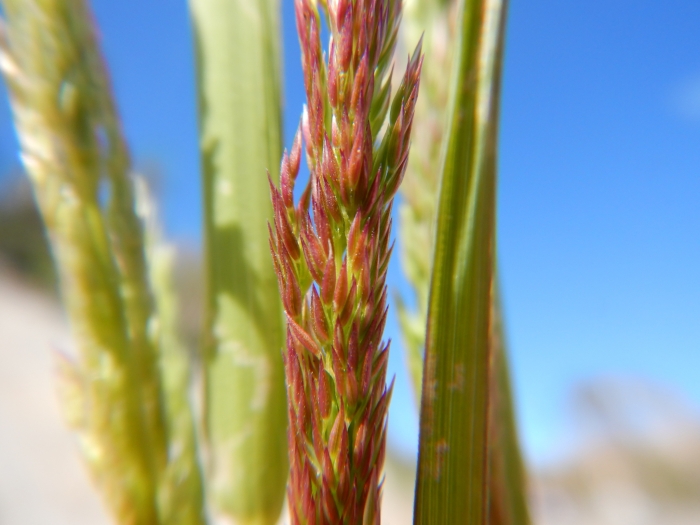Spike Bentgrass
(Agrostis exarata)
Spike Bentgrass (Agrostis exarata)
/
/

© Matt Lavin
CC BY 4.0
Image By:
© Matt Lavin
Recorded By:
Copyright:
CC BY 4.0
Copyright Notice:
Photo by: © Matt Lavin | License Type: CC BY 4.0 | License URL: http://creativecommons.org/licenses/by/4.0/ | Uploader: mattlavin | Publisher: iNaturalist |

























Estimated Native Range
Summary
Agrostis exarata, commonly known as spike bentgrass or Pacific bentgrass, is a perennial grass native to a variety of habitats including moist meadows, grasslands, open woodlands, and along watercourses in western North America, from Texas to the Aleutian Islands. It typically reaches a height of 1 to 3 feet and features long, thin, flat leaves. The plant forms a dense tuft inflorescence that can extend up to 12 inches long, with a flowering season that spans late spring through early summer. The flowers are not particularly showy but are valued for their contribution to the texture and movement in the landscape.
Spike bentgrass is appreciated for its adaptability to different environments and its use as forage for livestock, which underscores its agricultural significance. It is also used for erosion control and as a revegetation species in disturbed areas due to its ability to spread via rhizomes and reproduce by seed. In cultivation, it prefers full sun to part shade, moist conditions, and can tolerate a range of soil types, from sandy to clay, as long as they are well-drained. While it is not commonly used in ornamental horticulture, it can be a useful component in native plant gardens and restoration projects. Potential problems include susceptibility to rust and fungal diseases in overly wet conditions.CC BY-SA 4.0
Spike bentgrass is appreciated for its adaptability to different environments and its use as forage for livestock, which underscores its agricultural significance. It is also used for erosion control and as a revegetation species in disturbed areas due to its ability to spread via rhizomes and reproduce by seed. In cultivation, it prefers full sun to part shade, moist conditions, and can tolerate a range of soil types, from sandy to clay, as long as they are well-drained. While it is not commonly used in ornamental horticulture, it can be a useful component in native plant gardens and restoration projects. Potential problems include susceptibility to rust and fungal diseases in overly wet conditions.CC BY-SA 4.0
Plant Description
- Plant Type: Grass
- Height: 1-3.3 feet
- Width: 1-1.6 feet
- Growth Rate: Moderate
- Flower Color: N/A
- Flowering Season: Spring, Summer, Fall
- Leaf Retention: Deciduous, Semi-deciduous
Growth Requirements
- Sun: Full Sun, Part Shade
- Water: Medium
- Drainage: Fast, Medium, Slow
Common Uses
Erosion Control, Low Maintenance, Water Garden
Natural Habitat
Moist meadows, grasslands, open woodlands, and along watercourses
Other Names
Common Names: Spike Bent Grass, Seaside Bentgrass, Spike Redtop, Western Redtop, Pacific Bentgrass
Scientific Names: , Agrostis exarata, Agrostis aenea, Agrostis alascana, Agrostis alashana, Agrostis alaskana, Agrostis alaskana var. breviflora, Agrostis albicans, Agrostis alopecuroides, Agrostis ampla
GBIF Accepted Name: